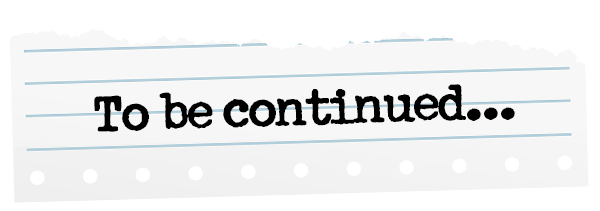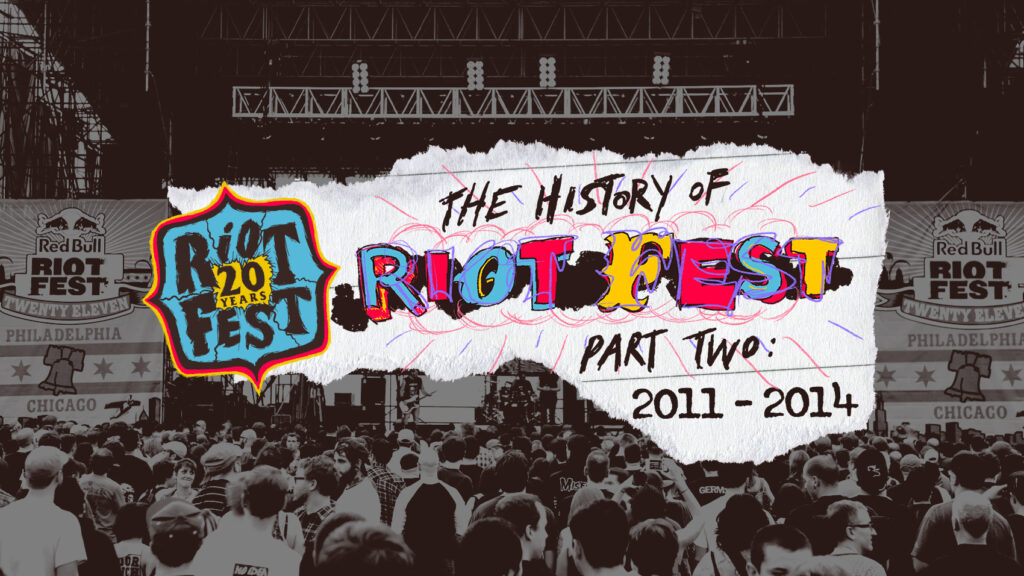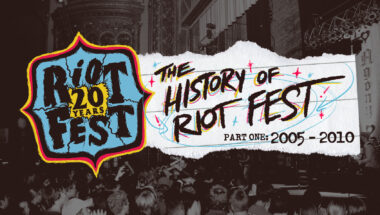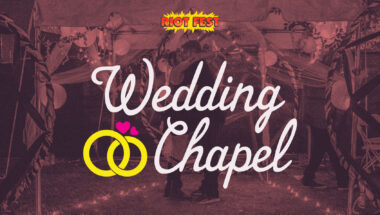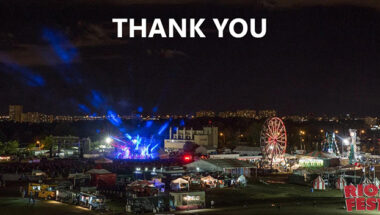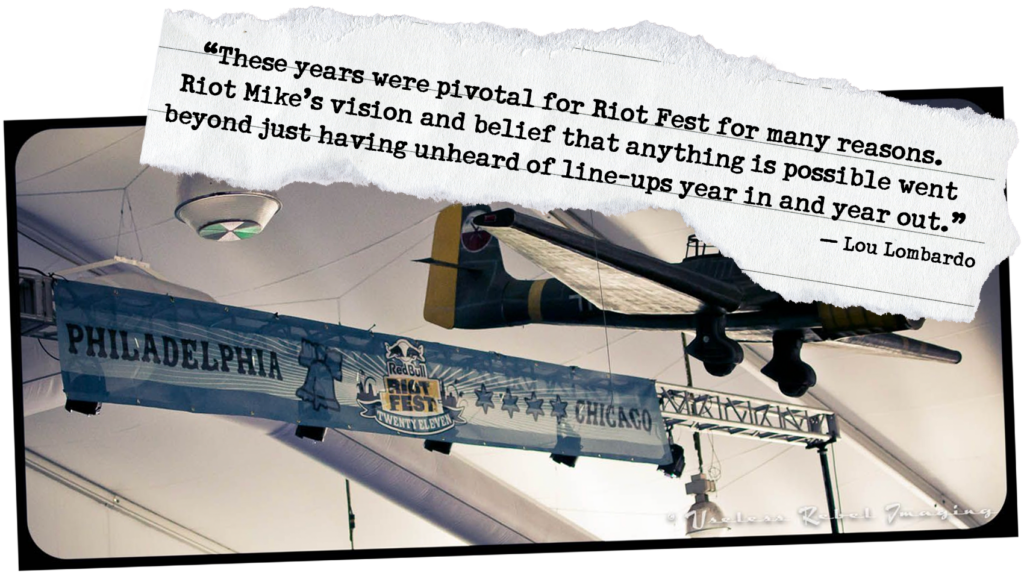
As the festival developed and expanded, Riot Fest was ready to spread its wings. September 2011 gave way to technically the very first outdoor Riot Fest – in Philadelphia, at what was once Festival Pier.
“There was no real rhyme or reason planned behind it, besides there being a lot of great music coming out of Philly.” Riot Mike recalled. “But mainly I had a friend who was a buyer in Philly who called me up and said “Dude let’s do Riot here” and I said fuck yeah, why not?”
Staff and fans alike, made their way east. Caroline (Author Note: Another titleless staff member) remembers driving from Chicago and even getting a speeding ticket in Ohio. She also recalls having to pour Red Bull in her beer to stay awake because she drove all night.
Though it was a new venue in a new city, the spirit of Riot Fest was all the same. Music fans were all packed together singing and dancing in the open air – the energy of being on the cusp of something new was palpable.
The weekend was even capped off by fireworks during the Descendents set. An admitted happy accident, but it marked Riot Fest East as a successful taste of the outdoors and sowed hopeful seeds for taking Chicago’s festival dates outside… and possibly elsewhere.
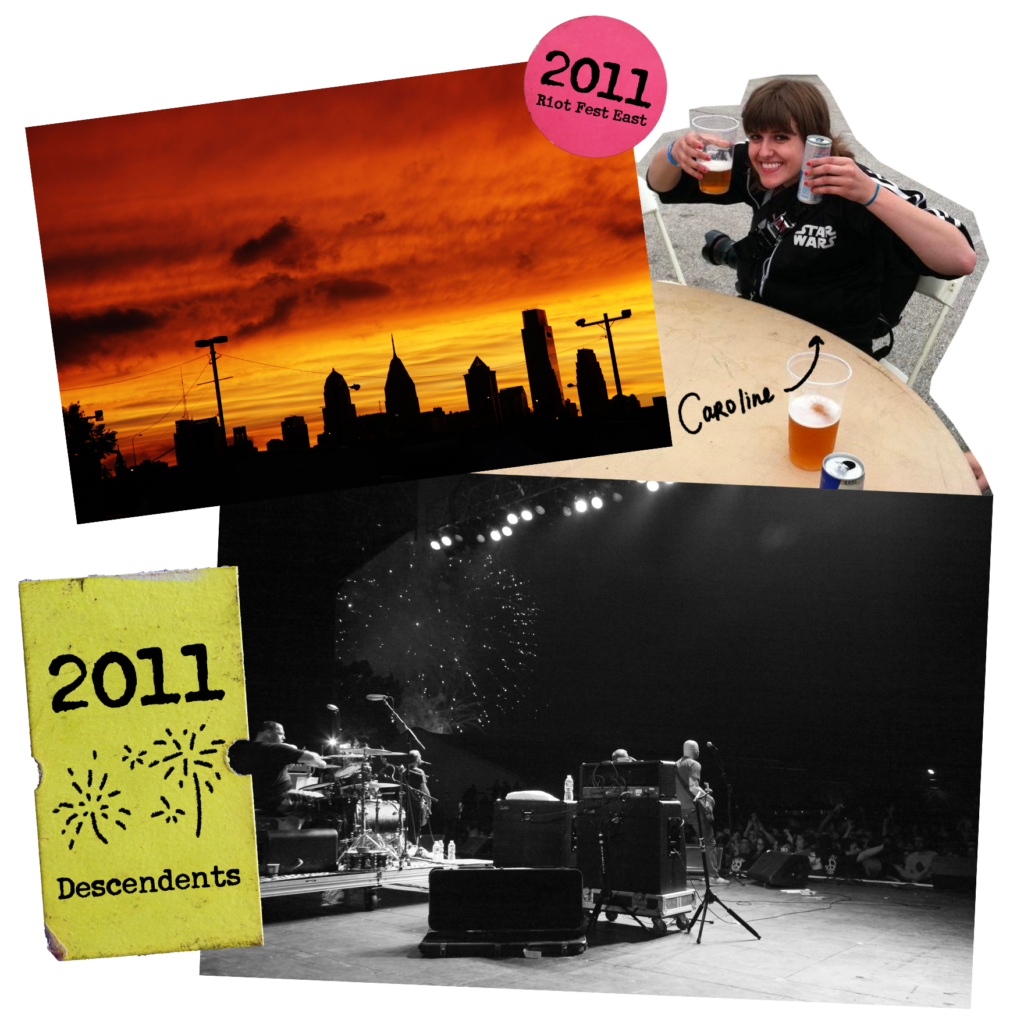
But before those dreams could be realized, there was no rest for the weary because it was back to Chicago for staff to finish preparations for Riot Fest 2011 with bands like Weezer playing their Blue Album in full, Social Distortion, Descendents, and multiple performances from Danzig.
As a fan himself, Riot Mike couldn’t believe the legacy performances. “This was huge for me. I loved Danzig growing up. Those first four albums were killer. His solo stuff, the Samhain reunion, then him bringing out Doyle to perform Misfits songs. I mean who wouldn’t wanna fucking hear that?”
“Booking Weezer was a big deal for us,” said Luba. “It not only helped diversify the lineup in terms of curation and creativity, but it was a key step in Riot’s expansion outdoors.”
One fan, Richard Thomas, even said that this was their very first Riot Fest seeing Weezer at Congress Theater. “When they played The Sweater Song, someone knitted a customer sweater offering up multiple loose ends. The crowd obliged and pulled it apart.”
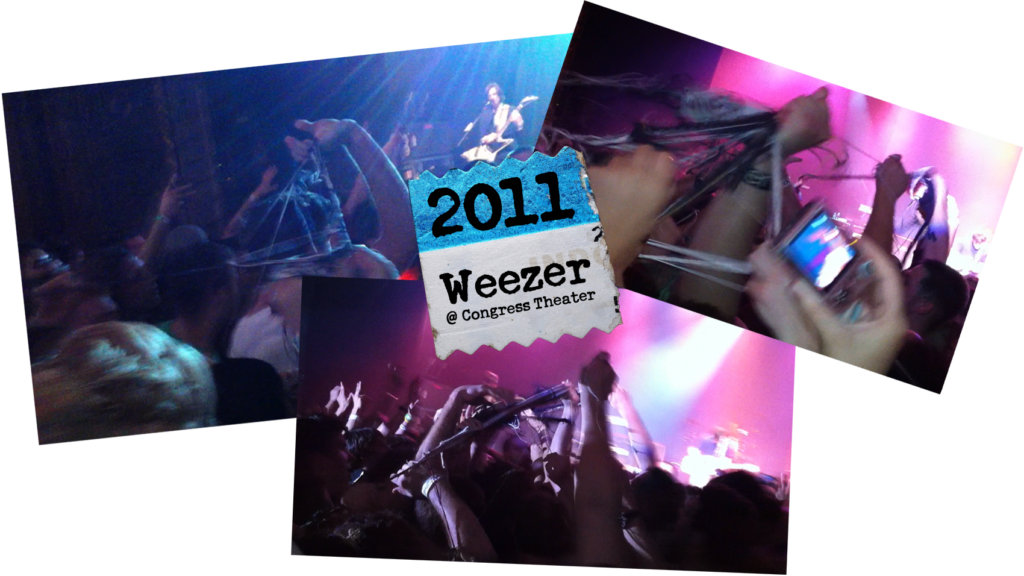
Despite having a growing success as a festival for the first six years, operations were still very much DIY. Staff played crucial roles in multiple places, still pulling long hours and doing as much as they could together to make it the best weekend for fans—a sentiment that remains true even today.
“I cannot stress enough the hard work and dedication it took for a handful of people to pull off these epic events.” Lou said. “Riot Mike is [like] Oz behind the curtain pulling all the levers, but a lot of credit goes to the individuals who also work around the clock to make all the Riot Fests memorable for everyone that attends. A lot of those early people are still at Riot today. A true labor of love.”
The decision to move Riot Fest outside in 2012 was tossed around between Riot Mike and co-founder Sean McKeough, but Mike was still apprehensive. Even though Riot Fest East had done well at an outdoor venue, he thought to himself that fans preferred their punk rock music in clubs and venues. “We didn’t feel big enough yet. I was terrified it wouldn’t do well.”
After some inspirational convincing from Sean and deciding on where to hold it, Riot Fest 2012 made its Chicago outdoor debut… and in three new cities. Brooklyn, Toronto, and Dallas were cities added to the festival’s repertoire.
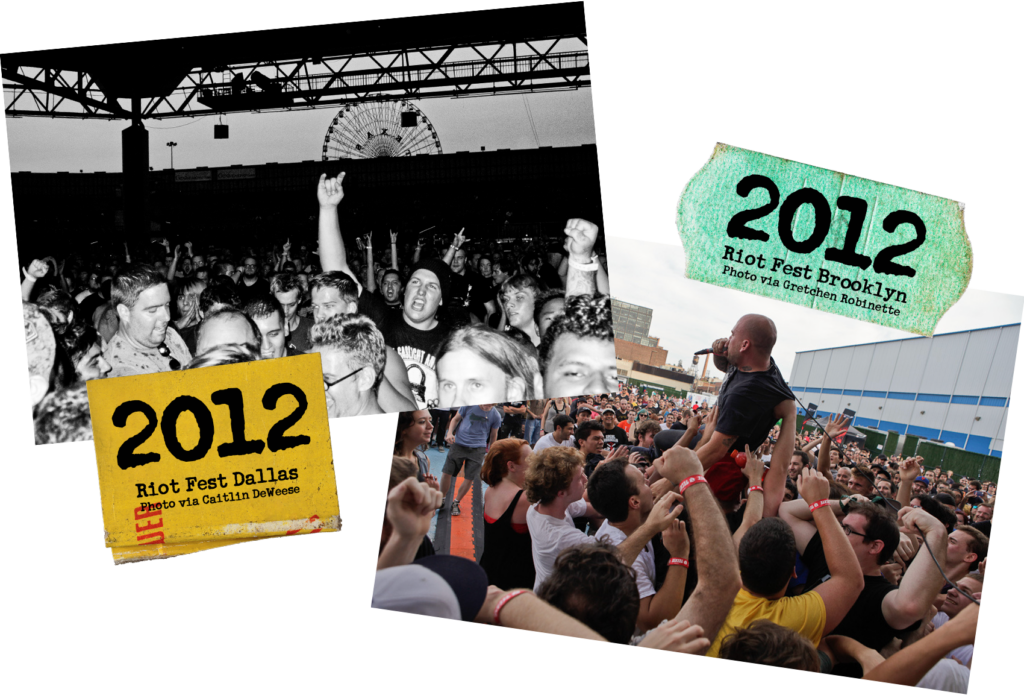
“We were testing out different markets. Dallas was a burgeoning market really.” Mike also explained that what helped make these cities possible was having operational and production partners to do the on-the-ground work that the Chicago staff would normally be doing. With the festival weekends happening so close together and a new home in the city, Riot Fest staff had a lot of spinning plates.
“I remember not being able to go to Dallas because I was still wrapping up Chicago from the week before, all while finishing up Toronto and Brooklyn,” Luba recalled, laughing and shaking her head.
“This was the first time we received a cease and desist letter from MLB over our Brooklyn lineup poster. As a big baseball fan, Mike was actually excited about it — just the fact that little ol’ RF was even on their radar.”
Friday, September 14, 2012 was the very last Riot Fest held in Congress Theater (with the official last Congress performance ever by NOFX on Saturday the 15th). The following day, the Riot Fest gates opened outside for the very first time in Humboldt Park.
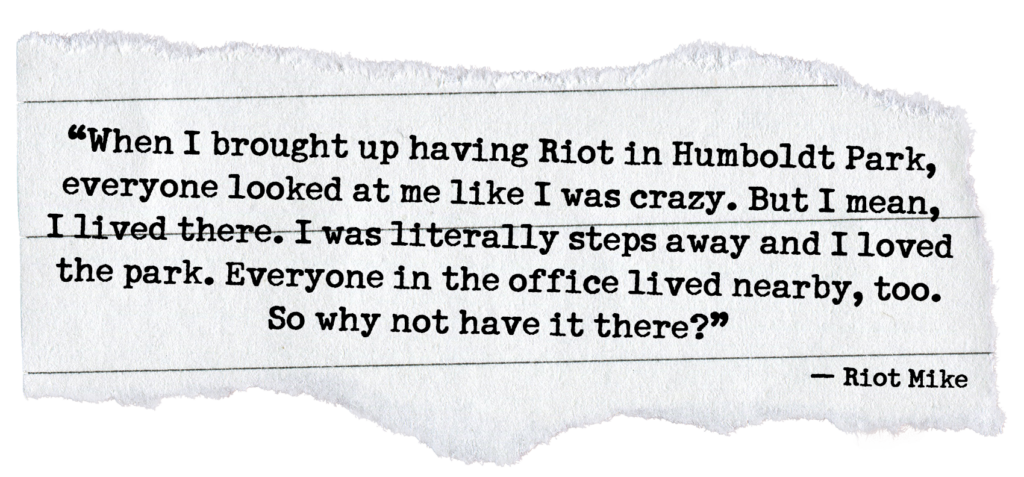
Like all new experiences, it was exciting and nerve-wracking all the same. Despite some learning curves for staff, fans and bands alike were thrilled. Beyond just the music, there were carnival rides, jugglers, lucha libre wrestlers, and people breathing fire. The spirit of Riot Fest still prevailed and even flourished.
“This was the first Riot Fest I attended,” said Dan, who would later become the Art Director in 2014. “When I walked through the gates and looked around, I just had this feeling of ‘I’ve found my people.’ I thought wow, this is a festival for people just like me. I immediately fell in love with it.”
“I just remember there being a sense of ‘how the fuck did they do this?!’” Brendan Kelly, from The Lawrence Arms, said in an interview with Alternative Press in 2017.
At the end of the weekend, Sean pulled Mike out of his cavern of a trailer and onto a golf cart to see the crowds. Mike laughed at the memory. “Sean pointed out to the crowd–there were tens of thousands of people watching–and said ‘You did this’ with a huge grin on his face.”
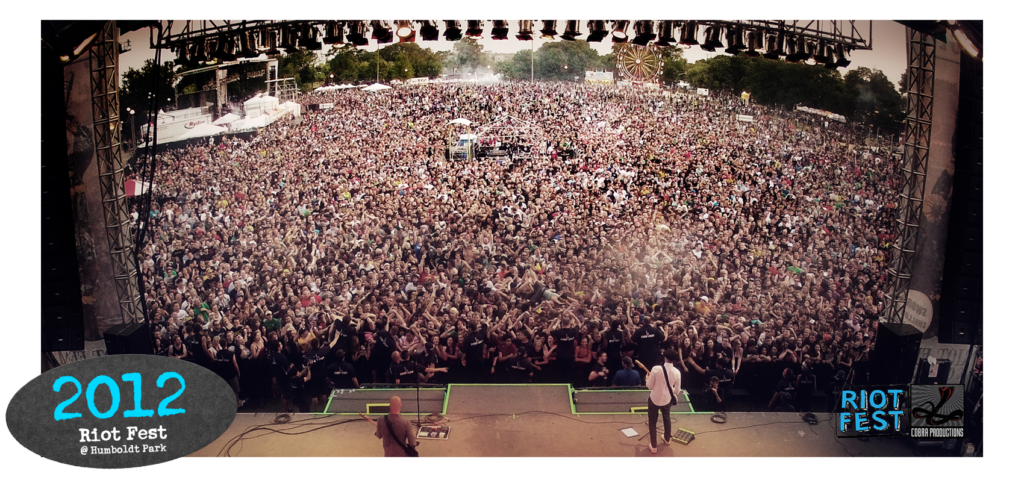
The following year, brought on a new city with Denver and a return to Toronto, all outside. Chicago’s Riot Fest in 2013 is probably the year most people will refer to when remembering Riot Fest outside. It was headlined by heavy hitters like Fall Out Boy, Blink-182, The Replacements, and Pixies.
Mo, who would eventually start as an intern in 2015, said this was their first Riot Fest and skipped class to attend. “I remember standing at the gates and thinking ‘oh my god this is just amazing’. I think for a lot of people like me who were looking for something beyond Warped Tour at the time, especially in the midwest, there was this gravitational pull towards Riot.”
After 2012, Mike made more of an effort to curate the lineup a little more and considered this year a breakout year. It was palpable the festival’s popularity was skyrocketing, not just as a music event, but as something the city could call Chicago’s very own.
“Hell, we all lived here and worked here in the city,” he said. “We weren’t in some corporate high-rise miles away, you know? I hoped people could look at Riot and feel like it was their hometown festival. Especially when we brought the Stanley Cup out for Fall Out Boy. That felt like a ‘Fuck yeah, Chicago!’ moment.”
Alongside the Stanley Cup was the very first, and beloved, Butter Stamos sculpture. A figure that would eventually become a pillar of Riot Fest’s brand and personality for years to come. The Huffington Post even called it “the most important piece of art to result from any 2013 summer festival.” It all added to the vision that the festival has become today.
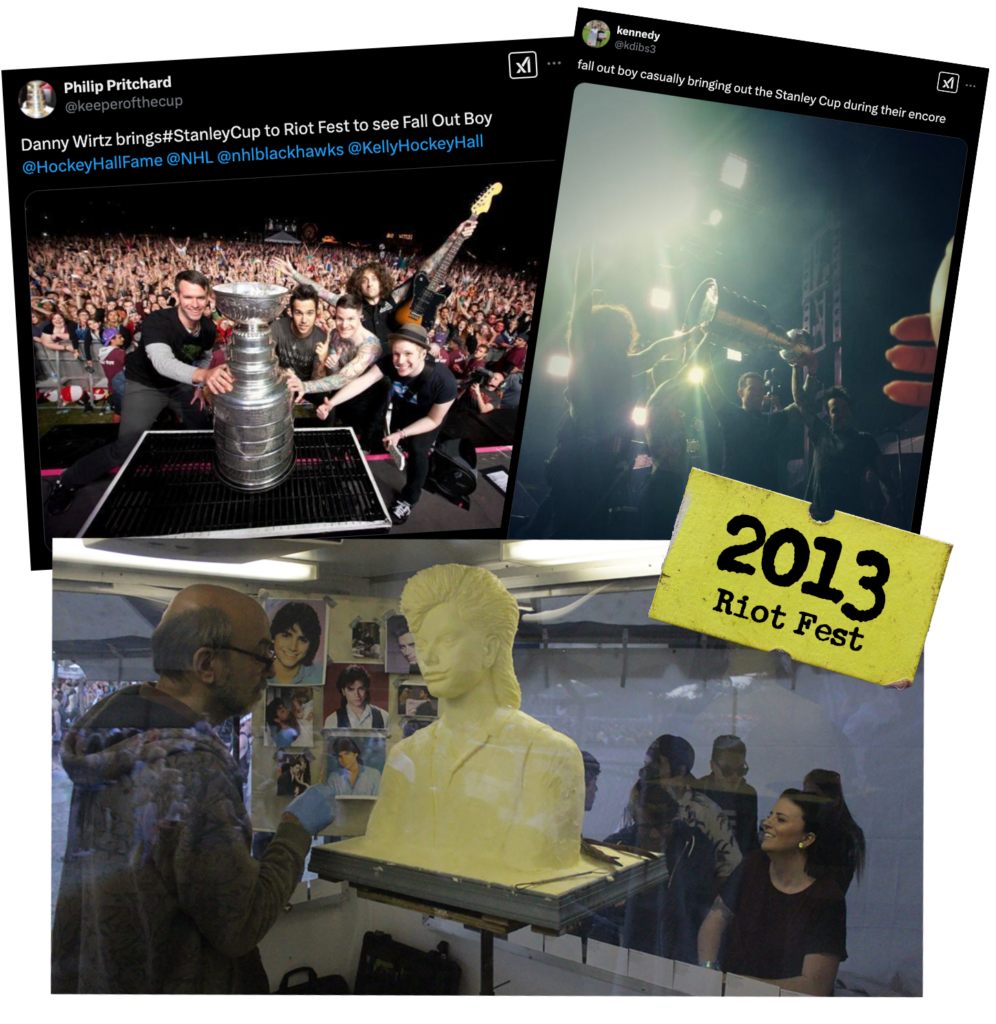
Denver 2013 has become a tale to tell within the office. Located on May Farms, it was the first and only Riot Fest to have camping. Though the first day went as smoothly as it could, the second day carried some certain complications as soon as a dangerous storm began to loom over the horizon.
“It did get scary for a minute. I remember running around in the pouring rain making sure everyone steered clear of the stages and found their way to shelter during evacuation.” Jeremy, Creative Director, remembered even pulling Mike out from his trailer before the worst of the storm hit. Despite the weather disrupting the day, there were still pockets of camaraderie amongst it all.
“With limited shelter options, we ended up having to gather all of the staff and all of the bands under one roof of this big barn,” Lou added. “What could have been a scary proposition, in true Riot Fest spirit, turned into a moment when headline bands like Blink-182, Public Enemy were just hanging out talking to people. It didn’t matter which line your band landed on the lineup or that you served food or swept the floor. We were all one happy Riot Family. I looked around multiple times and thought ‘this is still the Riot I know and love’ That’s pretty special.”
“Honestly,” Mike paused and let out a sigh before continuing. “The whole weekend felt like we were running around like headless chickens because it was one thing after another. But man, we got it all done, bands played, and our fans were okay and singing their favorite songs. We’ll probably never do camping again, that’s for sure.”
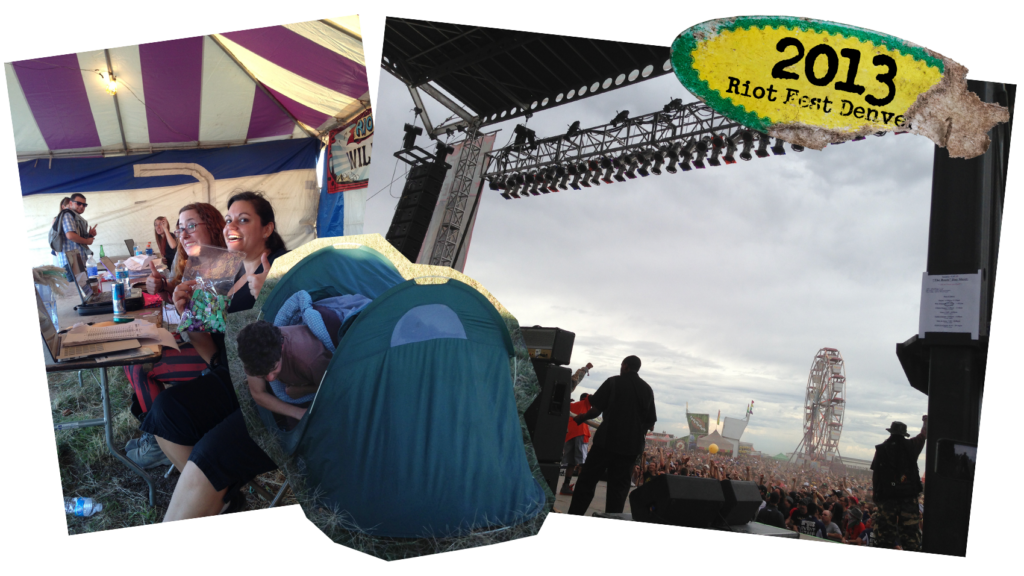
September 2014 saw the return of Riot Fest in both Toronto and Denver. With a refreshed look and more stages than before, it felt as though the festival had found its own rhythm outside. It had become an event that not only fans traveled to for fun, but bands as well.
“We were still on an island back then as a music festival, having it in September.” Mike explained. “Most festivals in the nation stopped around Labor Day weekend, which gave bands an opening to play the fest if they wanted to. Though some bands just wanted to come hangout. We welcomed that, too.”
With so many bands and three cities, there were plenty of stories to go around this year. This was the first year for Riot Fest Speaks, a curated discussion panel that featured members of Pussy Riot, moderated by Henry Rollins of Black Flag. Jeremy remembered Riot Mike writing a letter in Ukrainian to Pussy Riot as a pitch for them to play and speak at the festival.
“This was also the year we had to get a police escort for The National from the airport to the festival so they could play their set in time.” Mike shook his head in mild disbelief at it all. “There’s always an insane series of gears turning around here.”

